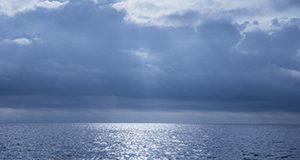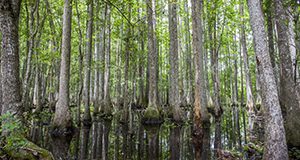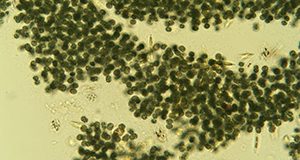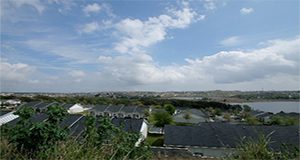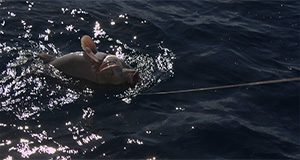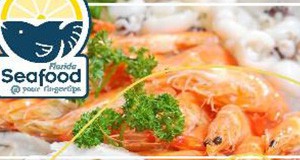The absorption of atmospheric carbon dioxide by the oceans has changed the chemical properties of seawater and made it more acidic all over the world. Florida, with an extensive coastline and deep cultural and economic ties to marine resources, will be directly affected. This 4-page fact sheet written by Lisa Krimsky, Joseph Henry, and Joshua Patterson and published by the UF/IFAS Program in Fisheries and Aquatic Sciences, School of Forest Resources and Conservation focuses on the spatial and temporal variability in oceanic pH and provide an overview of pH variability in Florida's coastal waters.
https://edis.ifas.ufl.edu/fa227
Tag: Lisa Krimsky
Ocean Acidification: Calcifying Marine Organisms
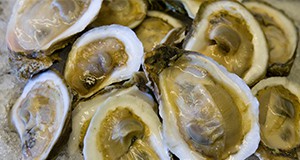
Rising atmospheric carbon dioxide concentration leads to ocean acidification and threatens coastal and marine ecosystems and organisms. This 4-page fact sheet written by Joseph Henry, Joshua Patterson, and Lisa Krimsky and published by the UF/IFAS School of Forest Resources and Conservation, Program in Fisheries and Aquatic Sciences explores the impacts of ocean acidification on calcification, the process corals, bivalves, echinoderms, and planktonic organisms use to build their shells and skeletons. Understanding how ocean acidification affects calcification is important for scientists seeking to determine the real-world implications and impacts of ocean acidification on some of the most important species in the marine environment.
https://edis.ifas.ufl.edu/fa220
Ocean Acidification: Fish Physiology and Behavior
Increased atmospheric carbon dioxide has led to increased levels of dissolved carbon dioxide in the oceans and acidified ocean water, which could have direct effects on the physiology and behavior of fishes. This 5-page fact sheet written by Joshua Patterson, Lisa Krimsky, and Joseph Henry and published by the UF/IFAS School of Forest Resources and Conservation, Program in Fisheries and Aquatic Sciences will summarize the current state of our understanding on the topic, with special emphasis on Florida fishes. It will also address current challenges in understanding the real-world effects of a complex global process using data largely collected on isolated fish in laboratory experiments.
https://edis.ifas.ufl.edu/fa219
Urban Fertilizer Ordinances in the Context of Environmental Horticulture and Water Quality Extension Programs: Frequently Asked Questions
Excess nitrogen (N) and phosphorus (P) in water bodies are a leading cause of water quality degradation statewide. More than 50 Florida counties and municipalities now have formal fertilizer ordinances, which in some cases include fertilizer blackouts, or bans on the usage of N and P fertilizers during certain times of the year. This 8-page document provides information on the underlying issues of fertilizer use, with an emphasis on an urban setting, and outlines the current state of the science on urban fertilizers and water quality in Florida. Written by Michael D. Dukes, Lisa Krimsky, Mary Lusk, Laurie Trenholm, Bryan Unruh, Michelle Atkinson, and Rao Mylavarapu, and published by the UF/IFAS Department of Agricultural and Biological Engineering, February 2020.
https://edis.ifas.ufl.edu/ae534
Wetlands as a Tool for Water Treatment
Wetlands are often referred to as "nature's kidneys" because of their ability to remove pollutants from water via storage in the soil and vegetation, as well as through losses to the atmosphere. This 7-page fact sheet written by Jay Capasso, Lisa Krimsky, and Jehangir Bhadha and published by the UF/IFAS School of Forest Resources and Conservation provides a general overview of the function and structure of large-scale treatment wetlands and the services they provide.
http://edis.ifas.ufl.edu/fr419
A Response to Frequently Asked Questions about the 2018 Lake Okeechobee, Caloosahatchee and St. Lucie Rivers and Estuaries Algal Blooms
Heavy rainfall with Hurricane Irma in 2017 and a rainy spring in 2018 set the stage for large-scale summer algal blooms in Lake Okeechobee and the St. Lucie and Caloosahatchee Rivers and Estuaries. Concerned residents and visitors flocked to social media. Authors Lisa Krimsky, Ed Phlips, and Karl Havens read their posts and tweets and now respond to concerns and questions about algal blooms in this 7-page fact sheet published by UF/IFAS Extension and the Florida Sea Grant College Program.
http://edis.ifas.ufl.edu/sg159
Ocean Acidification: An Introduction
Ocean acidification is the ongoing decrease in ocean pH caused primarily by the ocean’s taking up excess carbon dioxide from the atmosphere. Other impacts related to climate change (increased sea level rise, coastal flooding and extreme weather events) often receive more attention, but the acidification of the Earth’s oceans is well documented and is a major concern for the marine science community. This 4-page fact sheet written by Joshua Patterson and Lisa Krimsky and published by the UF/IFAS Program in Fisheries and Aquatic Sciences, School of Forest Resources and Conservation is the first in a series that addresses ocean acidification in Florida. It specifically explains the changes that are occurring to the chemistry of our coastal and oceanic waters because of elevated carbon dioxide levels. Additional publications address potential environmental, economic, and social implications for Florida.
http://edis.ifas.ufl.edu/fa206
A Brief Summary of the Water Bill, SB 552
This 5-page document written by Lisa Krimsky, Andrea Albertin, Charles Barrett, James Fletcher, and Mary Lusk and published by the UF/IFAS Program in Fisheries and Aquatic Sciences of the School of Forest Resources and Conservation is intended to act as a quick reference guide and is not inclusive of all measures in SB 552. This summary addresses the Florida Springs and Aquifer Protection Act, the Central Florida Water Initiative, Northern Everglades and Estuaries Protection, and Pilot Programs for Alternative Water Supply.
http://edis.ifas.ufl.edu/fa205
Awareness, Knowledge, and Perceptions of Barotrauma and Barotrauma Mitigation: A Survey of Florida Anglers
Saltwater recreational fishing is an important economic engine for Florida’s coastal communities. The annual economic impact to the Florida economy of saltwater recreational fishing, which sustains 110,000 jobs, is estimated to be $13 billion. Given the popularity and economic importance of reef fish, careful management of these fish stocks is imperative for the sustainability of the reef-fish resource. Barotrauma, a phenomenon that causes problems for deep-water fish caught and brought to the surface, is recognized by fishery managers as a key cause of death in “catch-and-release” reef fish. This 5-page fact sheet written by Charles Adams, Joy Hazell, Lisa Krimsky, Bryan Fluech, Betty Staugler, John Stevely, and Robert Botta and published by Food and Resource Economics Department describes a recent survey of Florida saltwater anglers and sheds light on incentives for and constraints against the use of barotrauma mitigation devices.
http://edis.ifas.ufl.edu/fe1010
Seafood Knowledge, Perceptions, and Use Patterns in Florida: Findings from a 2013 Survey of Florida Residents
Over the past few years, consumers have begun to pay more attention to the nutritional benefits, sustainability, and environment impact of consuming seafood. However, media coverage of these concerns may leave consumers confused and uncertain about how they should incorporate seafood into their diets. In 2013, a survey was conducted to better understand Florida seafood consumer preferences, perceptions, and concerns. This 4-page fact sheet explains the survey’s findings and how they might help Extension deliver effective seafood-based education to Florida residents. Written by Lisa Krimsky, Charles Adams, and Bryan Fluech, and published by the UF Department of Food and Resource Economics, May 2015. http://edis.ifas.ufl.edu/fe965
Mapping Your World with Community Analyst: An Easy to Use Tool to Map the Characteristics of U.S. Communities
 In recent years, the number of mapping and geospatial tools that are both feature-rich and easy to use has increased. This is good news because it allows many more of us to capitalize on the power and unique insights that such tools can provide without having to spend inordinate amounts of time learning how to use them. This article presents Community Analyst, a web application that provides access to thousands of business, demographic, economic, education, and health data variables for the United States. The application’s extensive suite of data metrics, in conjunction with on-demand reports and interactive color-coded maps, allows one to quickly explore the characteristics of one or more geographic areas. This 9-page fact sheet was written by Robert Swett and Lisa Krimsky, and published by the UF Department of School of Forest Resources and Conservation, October 2014.
In recent years, the number of mapping and geospatial tools that are both feature-rich and easy to use has increased. This is good news because it allows many more of us to capitalize on the power and unique insights that such tools can provide without having to spend inordinate amounts of time learning how to use them. This article presents Community Analyst, a web application that provides access to thousands of business, demographic, economic, education, and health data variables for the United States. The application’s extensive suite of data metrics, in conjunction with on-demand reports and interactive color-coded maps, allows one to quickly explore the characteristics of one or more geographic areas. This 9-page fact sheet was written by Robert Swett and Lisa Krimsky, and published by the UF Department of School of Forest Resources and Conservation, October 2014.
http://edis.ifas.ufl.edu/fr383
